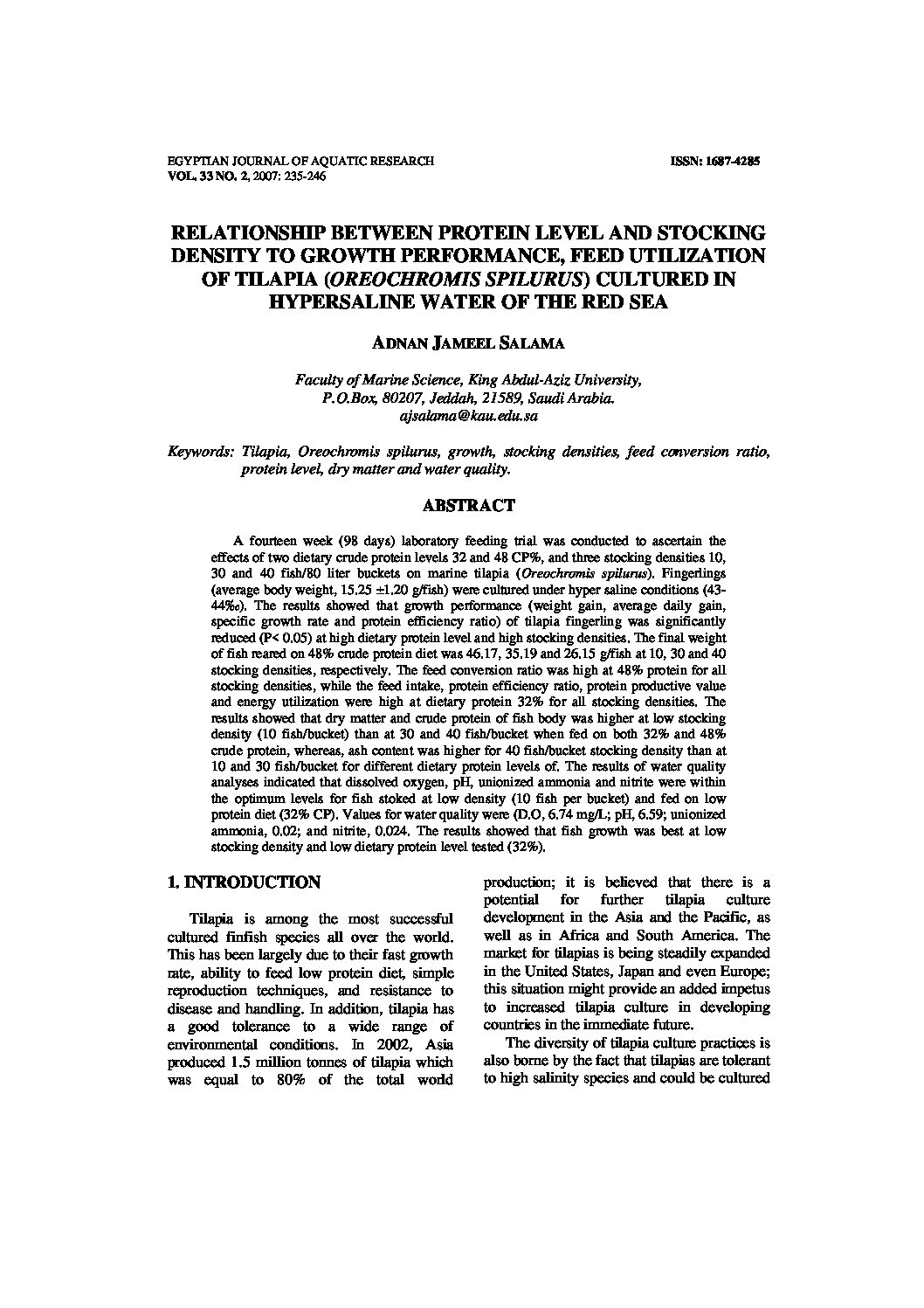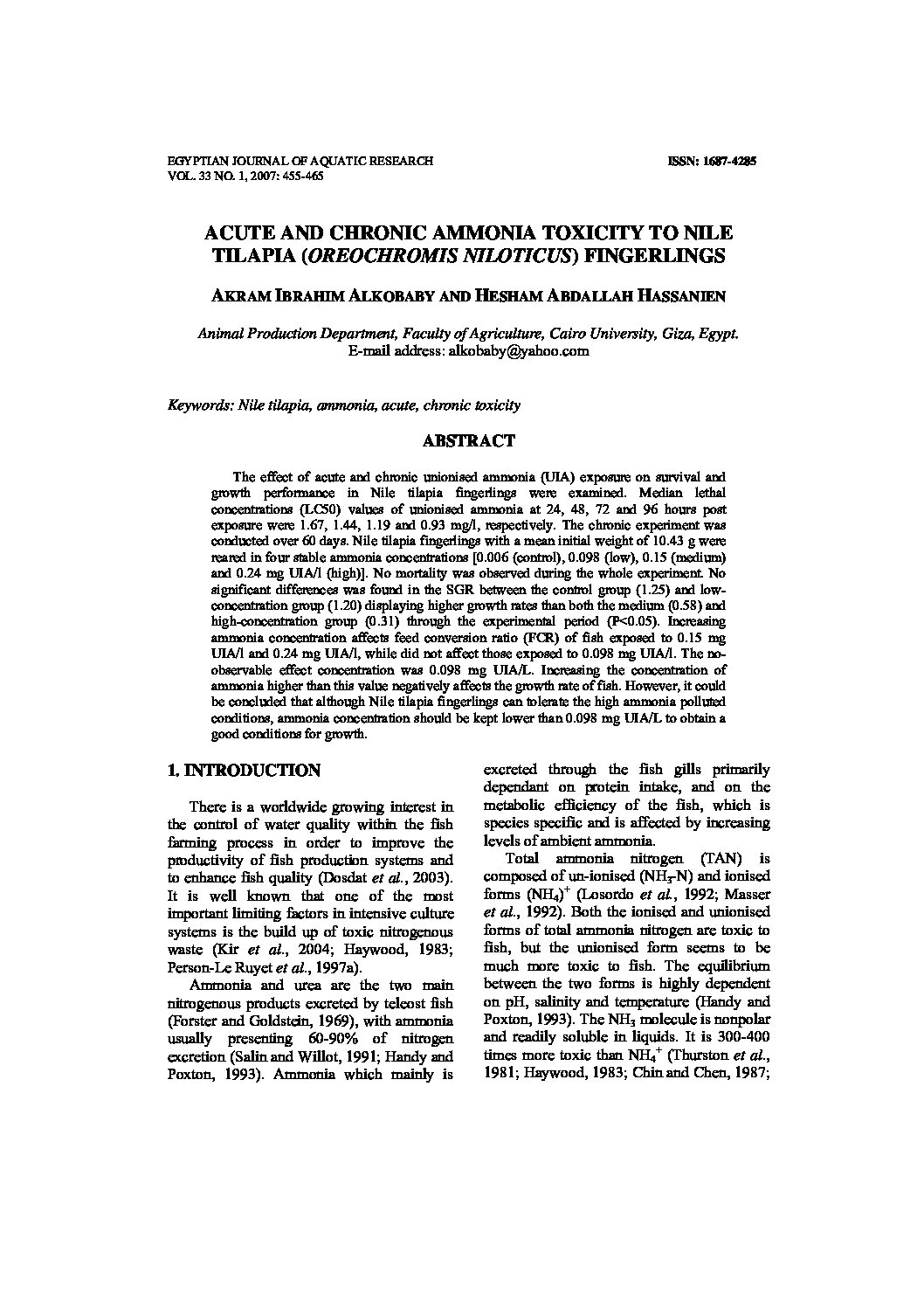Categories
vol-33RELATIONSHIP BETWEEN PROTEIN LEVEL AND STOCKING
DENSITY TO GROWTH PERFORMANCE, FEED UTILIZATION
OF TILAPIA (OREOCHROMIS SPILURUS) CULTURED IN
HYPERSALINE WATER OF THE RED SEA
ADNAN JAMEEL SALAMA
Faculty of Marine Science, King Abdul-Aziz University,
P.O.Box, 80207, Jeddah, 21589, Saudi Arabia.
[email protected]
Keywords: Tilapia, Oreochromis spilurus, growth, stocking densities, feed conversion ratio,
protein level, dry matter and water quality.
ABSTRACT
A fourteen week (98 days) laboratory feeding trial was conducted to ascertain the
effects of two dietary crude protein levels 32 and 48 CP%, and three stocking densities 10,
30 and 40 fish/80 liter buckets on marine tilapia (Oreochromis spilurus). Fingerlings
(average body weight, 15.25 ±1.20 g/fish) were cultured under hyper saline conditions (43-
44‰). The results showed that growth performance (weight gain, average daily gain,
specific growth rate and protein efficiency ratio) of tilapia fingerling was significantly
reduced (P< 0.05) at high dietary protein level and high stocking densities. The final weight
of fish reared on 48% crude protein diet was 46.17, 35.19 and 26.15 g/fish at 10, 30 and 40
stocking densities, respectively. The feed conversion ratio was high at 48% protein for all
stocking densities, while the feed intake, protein efficiency ratio, protein productive value
and energy utilization were high at dietary protein 32% for all stocking densities. The
results showed that dry matter and crude protein of fish body was higher at low stocking
density (10 fish/bucket) than at 30 and 40 fish/bucket when fed on both 32% and 48%
crude protein, whereas, ash content was higher for 40 fish/bucket stocking density than at
10 and 30 fish/bucket for different dietary protein levels of. The results of water quality
analyses indicated that dissolved oxygen, pH, unionized ammonia and nitrite were within
the optimum levels for fish stoked at low density (10 fish per bucket) and fed on low
protein diet (32% CP). Values for water quality were (D.O, 6.74 mg/L; pH, 6.59; unionized
ammonia, 0.02; and nitrite, 0.024. The results showed that fish growth was best at low
stocking density and low dietary protein level tested (32%).







